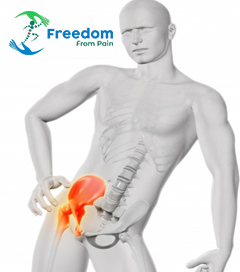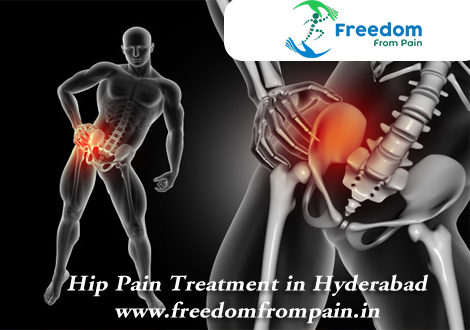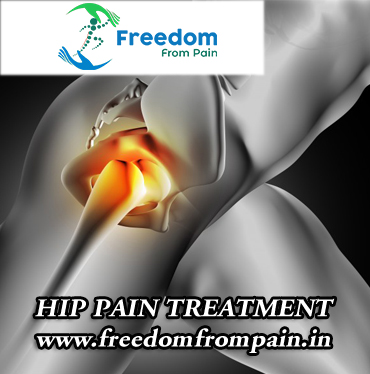Hip Pain Treatment in Hyderabad
The Hip joint is the largest ball-and-socket joint in the body. It connects the pelvis to the thigh bone (femur). The socket is called the acetabulum and the ball is the head of the femur bone. The hip joint is robust, designed and built to withstand a great amount of wear and tear, but, despite its durability, the joint is not indestructible, and hip joint pain is common.
Most people think of osteoarthritis as the cause of hip pain, but hip pain can be caused by a wide range of problems.
Hip pain affects men and women, young or old. It can start suddenly or slowly and can be mild or debilitating. It can be felt it in a small area around the hip or over a wider surrounding area. It can last days or years and can sometimes be hard to treat.
Hip pain is often short term or acute, and lasts a few days. It usually improves on its own with self-care. It is called subacute hip pain if it lasts between 4 and 12 weeks.
Chronic hip pain on the other hand, lasts for 3 months or longer, even after the initial injury or underlying cause of pain has been treated. Chronic hip pain can occur in some people that get acute hip pain. This means that in a small percentage of people the pain can continue for much longer than expected and in some of those cases the chronic hip pain can be debilitating and difficult to treat.

Painful hips can be caused by:
- Arthritis
- Degenerative arthritis
- Osteoarthritis (Also known as wear and tear arthritis. Usually a result of a broken or fractured bone)
- Rheumatoid arthritis
- Hip fractures
- Bursitis
- Tendinitis
- Muscle or tendon strain
Process of Treatment :
-
- Medications to reduce the pain. These may be simple over the counter medications or can be medications prescribed by a pain specialist. Medications might include muscle relaxants or anti-neuropathic (nerve pain) medications. Sometimes analgesic compound creams are used to ease pain.
- Pain interventions: injection therapies can be used to target, diagnose and manage chronic pain caused by muscle, joint and nerve pain. This includes interventional therapies like nerve blocks (lateral cutaneous nerve of the thigh, articular branches of the femoral and obturator nerve, medial branch nerve(s), lumbar nerve roots, cluneal nerves, gluteal nerves, sciatic nerve and even the lumbar plexus) radiofrequency ablation (RFA), pulsed radiofrequency (PRF) to the nerves previously blocked. Epidural and nerve root steroid injections. Sympathetic nerve blocks can also be performed.
- Platelet-rich plasma (PRP Injections) can also be used in some locations around this area. Botox injections can be considered for certain types of hip nerve pain. It can be helpful in providing pain reduction that can last many months at a time.
- Nerve stimulation or neuromodulation techniques: advanced pain reduction strategies may include spinal cord stimulation for severe hip pain. Some forms of spinal cord stimulation are high frequency stimulation (HF10), tonic stimulation, multi-waveform stimulation, Burst DR stimulation and even dorsal root ganglion (DRG) stimulation.
- Surgery is generally recommended when tests show structural changes that need corrective surgery. When other therapies fail, surgery may be considered an option to relieve pain caused by serious musculoskeletal injuries or nerve compression. These are typically performed by an orthopaedic surgeon. Types of surgery might include, arthroscopy reconstruction, open reduction & internal fixation, osteotomy, synovectomy, relocation of a dislocated hip, arthrodesis, total hip replacement, joint revision.
- Rehabilitation: most types of chronic pain treatment should be managed alongside some form of specialist rehabilitation. This is when the best results occur.



